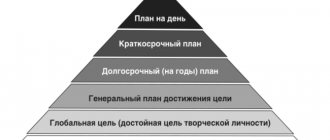Endowment life insurance (CLI) is a program that combines two options: life and health insurance; long-term savings deposit. This type of insurance in Russia is not yet in great demand due to the fact that most citizens do not have confidence in any form of long-term investment. However, in the West, NSJ has existed for quite a long time and is very popular. In this article, we will analyze the features of the private life insurance, its main differences from a standard bank deposit, as well as the types of endowment life insurance programs.
What is NSJ
First you need to get a general idea of what it is – endowment life insurance. Everyone knows what standard insurance is: you enter into an agreement with an insurance company and pay premiums (payments can be made either in one lump sum or in installments). If an insured event occurs, you will be paid the premium specified in the contract (policy). For life insurance, this event occurs when the insured person dies and the premium is paid to the beneficiary (such as a spouse or close relative). If during the period of validity of the contract the insured event did not occur, i.e. the insured citizen is alive and well, then the premiums he paid for the entire period are not returned, but become the company’s income.
The main difference between an insurance policy and a standard insurance contract is the guarantee of payment of all paid insurance premiums with interest if the person survives until the end of the policy.
In simple words, a citizen pays contributions, and the company invests them and at the same time provides insurance services. After a certain period, a person receives his money back with interest. In this case, you need to be aware of two more essential conditions:
- the NJ policy is issued for a period of at least 5 years;
- payments for the entire period must be made on time and in full. Otherwise, you may lose some of your money.
How life insurance works
An endowment life insurance contract is a document containing the following data:
- the amount that needs to be accumulated by a certain date;
- the duration of the contract is at least 5 years;
- the amount of annual or quarterly payment according to the schedule;
- types of insurance cases;
- the amount of annual guaranteed income – as a percentage per annum.
The following circumstances are recognized as insured events under the insurance policy:
- survival;
- disability;
- temporary disability;
- payment for treatment;
- death of the insured person.
As for the policyholder's investment income, its amount may be greater than the minimum percentage specified in the contract. Typically, funds are invested in low-risk financial instruments (bonds or bank deposits). The return on such assets, as a rule, does not exceed the percentage of inflation.
Guaranteed income is a percentage of premiums that the company pays to the policyholder annually, regardless of the financial result of investment activities.
The currency of the NSJ agreement can be either rubles or US dollars. Payment of contributions under a dollar agreement is made in rubles at the Central Bank exchange rate on the day of payment.
Example. Nikolay wants to save 2,250,000 rubles. ($30,000 or 870,000 UAH) in 5 years. Accordingly, annually you need to deposit 450,000 rubles into the insurance company. ($6,000 or 174,000 UAH). The annual guaranteed income under the NJ agreement is 5% per annum. This means that in the absence of insured events, Nikolay will receive in 5 years an amount of at least 2,362,500 rubles. ($31,500 or 913,500 UAH):
6000*5% = 22,500 rub. ($300 or 8,700 UAH) – annual investment income;
6000*5+300*5=2,362,500 rub. ($31,500 or 913,500 UAH).
Why apply for a tax registration certificate?
NJ is a tool that will help you accumulate a substantial amount by a certain date without high returns. For what purposes may the accumulated capital be needed?
- Funds for living after retirement. It is known that state pensions for the majority of Russians are unlikely to allow them to maintain the standard of living to which a person with income from work or business is accustomed.
- Children's education. If you recently had a child, then by the time he enters university you will be able to save the required amount.
- Other targeted savings (for example, real estate).
If the need arises for expensive treatment, endowment life insurance will allow you not to think about where to get the money. In addition, a tax deduction in the amount of 13% of annual contributions is provided for contributions to the NSJ, but not more than 15,600 rubles. In this case, it is necessary to comply with the condition that the contract is concluded for a period of at least 5 years.
Thus, if we return to our example about Nikolai, then after 5 years you can receive an additional 78,000 rubles. (15600*5).
Let's look at 3 solutions to his problems that are offered by different companies
- Offer from the Russian company PPF Life Insurance
- Offer from the foreign insurance company National Western Life.
- Combination offer from UniLife and Investors Trust.
We will compare the key parameters of these plans, based on the client’s ability to save a certain amount monthly and annually. As a result of the comparison, you will clearly evaluate the advantages and disadvantages of the proposals.
Why PPF Life Insurance?
Of the Russian companies, we chose PPF Life Insurance, because based on the reviews and analysis, we came to the conclusion that among all Russian companies they offer the most interesting programs. It is worth noting that, in general, Russian life insurance programs in Russia are very similar and differ only slightly from each other.
Why did we add a 3rd option: a combination of Investors Trust and UniLife?
Because today the second option, the National Western Life policy, is not available to citizens of Russia and the CIS. On 2 February 2017, National Western Life (NWL) stopped accepting new applications.
Why?
The main reason is that the reinsurance company (NWL’s partner) refused to provide reinsurance for new clients from Russia and the CIS. Let us recall that National Western Life has been actively accepting clients from the Russian Federation and the CIS for 12 years, since 2005. Thousands of people opened policies. There were more than 35 insurance cases and payments for them over these 12 years to people from the CIS.
National Western Life continues to provide life insurance to clients from Europe and the EU, including Latvia, Lithuania, and Estonia. Therefore, if you live in Europe most of the time (from 6 months a year), you have the opportunity to open a plan with National Western Life. To do this, contact us, we will help you open a policy.
Why do we compare the NWL calculation?
Because NWL is a classic international insurance company that offers universal life insurance.
It is the most reliable and modern, very much developed in the USA and on the international market. This is a kind of quality standard at the level of all American companies and at the international level. This is a guideline that will allow you to understand the pricing policy of companies and the advantages of using international life insurance programs.
For you, this example will become a springboard from which you can start to make the right decision and understand the essence and tasks that endowment life insurance solves in the USA and on the international market.
Information for action. What else is available today
By contacting us, you can receive comprehensive information and full support when opening a policy with the ManuLife insurance company. The minimum insurance amount must be at least $1,000,000, with an annual premium of $10,000 or more. If your annual income starts from $100,000 (from 6 million rubles per year), this option will be an excellent solution for you.
ManuLife also offers universal life insurance and index plans similar to NWL.
For what purposes is NSJ not suitable?
NSJ is not suitable in the following cases:
- If you want to get a high return on investment.
- If you are not sure that you will be able to contribute the agreed amount each year.
Thus, in order to conclude an NJ agreement, it is advisable to have a financial safety net that will allow you to make contributions on time in the event that you are left without income (for example, upon dismissal). In case of temporary disability, the NSW policy will allow you to cover the costs of treatment, but even in this case, if you fail to make contributions on time, you risk losing part of the funds. The exception is when the client activates the option of exemption from payment of disability contributions.
What can you insure yourself against?
- After the death of the policyholder, the persons named in the policy (beneficiaries) will receive the agreed amount. An important point is that in the event of the death of the policyholder during the policy period, the beneficiary will receive the entire amount specified in the contract, even if the policyholder managed to make only one payment during his lifetime.
- You can also insure your health. There are several options here:
- onset of disability. If the client becomes disabled during the term of the contract with loss of ability to work, then the insurance company pays the remaining premiums for this person. Upon expiration of the policy, the client will receive the amount that was planned. To do this, when concluding a contract, the corresponding option must be enabled;
- injury. When an injury occurs, the insurance company allocates funds for treatment;
- lump sum disability payment;
- payment for treatment of various diseases, etc.
- The NSJ policy provides you with insurance against non-repayment of the planned amount. This is its main function.
Life insurance in 3 options in numbers from the point of view of financial protection
If the client passes away, the company will pay the insurance amount to the family. How much will insurance companies pay to the client's family in this example? Let’s take insurance payments at intervals of 5 years and calculate payments in the future for 30 years:
| Policy year | PPF Life Insurance, $ (rub) | National Western Life, $ | UniLife + Investors Trust, $ |
| 1 | $167,000 (RUB 10,000,000) | 354 280 | 350 000 + 4552 (+1%) |
| 5 | $167,253 (RUB 10,015,155) | 374 547 | 350 000 + 25 770 (+1%) |
| 10 | $169,051 (RUB 10,122,797) | 408 695 | 350 000 + 64 259 (+1%) |
| 15 | $172,860 (RUB 10,350,916) | 457 666 | 350 000 + 120 112(+1%) |
| 20 | $179,037 (RUB 10,720,784) | 525 106 | 350 000 + 202 670 (+1%) |
| 25 | $188,068 (RUB 11,261,513) | 621 258 | 350 000 + 323 509 (+1%) |
| 30 | $200,603 (RUB 12,012,162) | 759 652 | 350 000 + 509 512 (+1%) |
In the PPF, the maximum amount of life insurance in the first year is $167,000, i.e. 10 million rubles. Over the years, the amount of life insurance decreases. At the same time, the total insurance payment gradually increases.
The insurance payment is both savings and the amount of life insurance. Those. The insurance payment is savings plus the amount of life insurance. At the end of the term, the life insurance amount is reduced to zero. And the insurance payment increases due to savings. In other words, at the end of the term, in the event of the client’s death, the company pays only savings.
In NWL, the amount of life insurance is fixed for the entire period of the contract and is equal to $350,000. In the event of the client's death, the company pays the family $350,000 and the savings that are in the policy for a specific year. Savings also increase, so your total insurance payout increases over the years.
After 30 years, in the event of the client’s death, the insurance company will pay the family $350,000 (the amount of life insurance) and $409,652 (capital, taking into account all% of profitability and service tariffs).
In a combination of UniLife and Investors Trust . In the UniLife policy, the amount of life insurance is fixed – $350,000. The contribution is fixed once and for all and it does not change over the years. The earlier a person opens a life insurance policy with UniLife, the lower the annual premium, which means the insurance costs him less.
UniLife plans are lifelong risk life insurance. Risky means there is no savings in these plans. If you stop making contributions, then the life insurance itself ends, and the client is not entitled to any savings. However, contributions are generally small.
If a person does not live to age 100, the insurance company is guaranteed to pay out $350,000 to beneficiaries. If a person lives to be 100 years old and makes annual contributions, then at 100 years old he can withdraw the insurance amount for which he has been insured all this time. Or, at 100 years old, he can continue (extend) the contract to 125 years, then his heirs will receive this amount of $350,000.
At UniLife, insurance can be purchased for a maximum of $6,000,000. An agreement with a company can be concluded remotely, without leaving the country of residence, for example, Russia, Ukraine, other CIS countries and Europe.
The Investors Trust plan is a savings-growing plan that is an investment life insurance plan. In the event of death, the insurance company will pay the family the amount of savings (account balance) and 1% (this is the life insurance amount). An agreement with Investors Trust can be concluded remotely, without leaving your country of residence, for example, Russia, Ukraine, other CIS countries and Europe.
Thus, in the first year the payment will be:
$350,000 (UniLife) + $4597.52 (Investors Trust: capital 4552+1%)
After 30 years the payment will be:
$350,000 (UniLife) + $514,607 (Investors Trust: capital $509,512 + 1%)
Types of endowment life insurance programs
NSL is a type of insurance consisting of a basic program and additional options that are included in the policy at the request of the policyholder.
The main program provides for two insurance cases:
- Survival until the end of the program. In this case, the policyholder personally receives the insured amount specified in the policy.
- Death of the insured person during the policy period. If this sad event occurs, the persons specified in the contract will receive the insurance premium in full.
Thus, the policyholder or his relatives will receive the entire capital in any scenario, which is the main advantage of the NJ.
Additional options can be selected from an extensive list depending on the client's preferences. Here you need to take into account such factors as the state of his health, the specifics of his work activity, the presence of dependents, etc. We list the main categories:
- Accidents (AC), incl. production:
- injury as a result of an accident;
- hospitalization and surgery as a result of NS;
- temporary incapacity for work and the onset of disability as a result of NS;
- death as a result of NS, etc.
- Disability groups 1 and 2:
- lump sum payment after the onset of disability;
- exemption from payment of contributions for disability.
- Deadly diseases. Upon receipt of a diagnosis of a life-threatening disease, the policyholder can expect a lump sum payment from the insurance company or payment for treatment.
Next, we will consider the answers to frequently asked questions about the NJ program.
How and how much should I pay?
When calculating the amount of mandatory payment, the following parameters are taken into account:
- gender and age of the policyholder;
- duration of the policy;
- availability of additional options;
- currency of the agreement (rubles or dollars);
- frequency of contributions.
To calculate the approximate amount of the annual insurance premium, you can use the online UI calculator on the insurance company’s website. For example, I used a calculator from Sberbank. There you need to indicate the above data, and the system will give an approximate amount of the amount that needs to be paid. The frequency of making contributions can be either one-time, quarterly or annual. If you pay a one-time premium, some additional options may not be available.
Online calculation gives only an approximate result. For advice and to obtain a more accurate payment schedule, it is better to contact the insurance company personally or engage an independent financial advisor.
When will the money be paid?
As mentioned above, depending on the insured event, the premium taking into account investment income will be paid:
- upon survival - upon expiration of the policy;
- when the policyholder dies - immediately after establishing the fact of this event;
- upon the occurrence of insured events for which additional options are connected, after establishing the fact of these insured events, for example: after submitting to the insurance company a document on disability, a certificate of incapacity for work, a certificate from a medical institution, etc.
If the contract is terminated early, there are two options:
- if you change your mind about registering an NJ within 14 days after signing the agreement, you can return all fees in full. This is the so-called “cooling off period”, which applies to all types of insurance contracts. However, in some cases, insurance protection is valid immediately from the moment the contract is concluded. Then you will be charged the amount of premiums in proportion to the number of days the insurance is valid.
- If you decide to terminate the contract after 14 days from the date of signing, you will be charged a portion of the fees paid. The percentage of the redemption amount depends on the number of days during which the insurance protection was valid, as well as on the individual terms of the contract with the insurance company. Typically a surrender table is created that shows all of your premiums and retention percentages.
Reviews from policyholders
- Vadim, 30 years old: I have been working for the insurance company Rosgosstrakh for 4 years. During this time, he took out many life insurance policies. Clients are not yet so familiar with this service; most are distrustful and sign contracts for a minimum period and minimum amount. There have been several insurance cases where the insurance company has to pay out capital before the due date. This procedure lasts longer than the agreed date (10 days from the date of the client’s death); for us it took about 2 months, since the family of the deceased did not have all the documents allowing them to issue a return of capital. This situation is sad, because insurance should be close to people, and not become a problem.
- Alena, 27 years old: Chief insurance agent of Renaissance Bank, for Renaissance-Life insurance. I am very pleased with this work, the team and the bank in general. Life insurance and capital accumulation is our favorite procedure, it does not take much time, everything is explained in the policy as clearly as possible. There is also a lawyer constantly present in the department who can explain and help with the choice of insurance. There have been many cases where clients came for capital after 10 years and were very satisfied. Finally, this European approach is now becoming popular. The company accrues interest regularly, and in case of insurance risks, it looks for all possible ways to return the capital to the relatives of the deceased client.
- Maria, 42 years old: I have been working at the VTB insurance company for more than 15 years, and periodically there are difficulties with obtaining endowment insurance for a person’s life. Many people simply don't trust banks and insurance companies. Although now the situation has improved, there are insurance cases when the insurance company does not want to pay out capital; in the department where I work, such cases also sometimes arise, but not through the fault of the employees, but of the managers. Sometimes the situation with relatives becomes tense and you have to go to court to pay the insurance capital. Such cases have a negative impact on the company's reputation.
In Russia, the accumulation of insurance capital is not yet such a popular service as in Europe, but people are little by little realizing that such capital is needed to maintain a normal life in retirement or pay for children’s education. Banks and insurance companies are in every possible way promoting the conclusion of life insurance contracts in case of death, giving good interest rates and short periods of storage of insurance capital. When choosing a contract, you should take into account your income and plan a budget taking into account monthly insurance payments, so you can accumulate a good amount in a short period of time.
Will the money be returned for sure?
The insurance premium consists of two parts:
- The risky part. This is the so-called risk fee, which makes up a smaller share of the total premium. It is the risk part that is withheld from the client upon early termination of the contract.
- Accumulation part. This is the main part of the premium, subject to return in full upon expiration of the policy.
Provided that you have made payments on time and in full, you are guaranteed to be paid the entire portion of the insurance premium. In this case, the risk part is covered by guaranteed investment income.
Review of insurance programs (comparison of conditions)
The terms and conditions of the insurance programs in different companies differ in terms of insurance periods, a set of additional options, the amount of the down payment, currencies, etc.
Some companies insist on making the entire contribution at one time. Of course, not everyone can do this. The best option is to make contributions annually. If you want to do this more often (once a quarter or monthly), then you should pay attention to the size of the commission. The longer the contract term, the less you overpay to the insurer.
The commission should be mentioned separately. Usually these conditions are not advertised, but the commission (or risk premium) is usually charged for the entire period from the first installment paid and can be up to half of its amount. That is why it is more profitable for the insurer to receive the entire amount at once. Subsequently, the amount of remuneration is covered by guaranteed investment income and is distributed over the entire policy period.
Here are a few insurance companies that provide the most interesting conditions within the framework of NJ programs in Russia:
- Sberbank Life Insurance (a subsidiary of Sberbank PJSC).
- IC "SOGAZ-LIFE" (insurance).
- AlfaStrakhovanie-Life (a subsidiary of Alfa-Bank).
- MetLife (an international insurance company operating for more than 150 years in the markets of the USA, Europe, Asia, Latin America and the Middle East).
And for you we have prepared answers to frequently asked questions on the topic of life insurance
Why are there more savings in an ITA even though the contributions are lower?
Because NWL and PPF policies have an expense component, which is included in the annual premium and the amount of savings. The expense part is the tariff for insurance. Therefore, the amount of savings reflects the annual write-off of this life insurance rate. There is no insurance rate in ITA because there is no actual insurance in the policy.
The ITA –Evolution plan is a portfolio investment plan, so its returns are higher than those of NWL and PPF. Contributions go into a separate life insurance plan at UniLife, which is guaranteed to pay out upon death for any reason.
What fines are provided for in the 3 proposed options?
In NWL and ITA, penalties apply for the first 15 years of contracts. From the age of 16 there are no fines.
In the PPF, fines apply for the first 20 or 25 years. The calculation does not reflect the account balance, so we cannot say 100% of this. However, we see that the amount of savings “overtakes” contributions in the 28th year. Penalties are likely to apply for the first 28 years or even all 30 years.
What is the validity period of insurance coverage?
In PPF – up to 65 years. At a maximum, according to the insurers’ conditions, the policy can be valid for up to 75 years, then it is closed. That is, there is no life insurance.
In NWL - up to 121 years of life are guaranteed. The insurance company will in any case pay money to the client's family in the event of death.
In UniLife - up to 100 and 125 years are guaranteed. The insurance company will in any case pay money to the client's family in the event of death.
When can payment of contributions be suspended?
In PPF Life Insurance after 30 years.
At National Western Life in at least 15 years. In this example, after 30 years.
In Investors Trust after at least 15 years. The minimum condition of the contract is to make contributions to the insurance company in equal amounts ($4,212 annually) for 15 years or to make the required amount of contributions for 15 years—in this example, $63,180. However, this example shows contributions over 30 years.
The attached PDF illustration shows contributions for 25 years, as... The financial calculator does not allow you to calculate contributions for 30 years in this plan.
In UniLife (GuardRisk) after 15 years. But as soon as you stop making contributions, the plan ends. There is a grace period of 3 months during which the missed payment must be made.
What is the duration of the contract?
PPF Life Insurance. The maximum term of the contract is up to 75 years according to the company’s terms, that is, the plan is not a lifelong insurance plan.
National Western Life. The contract is valid for up to 121 years of life, that is, it is life insurance.
Investors Trust. The contract term is up to 100 years. This is a lifetime investment and insurance plan.
UniLife (GuardRisk). The contract term is up to 125 years. At the same time, at the age of 100, you can withdraw the insurance amount for which you yourself have been insured all along. In this example, a person can take $350,000, or extend the contract to 125 years, and then this $350,000 will go to his family.
Why do this? This way, you can save your family from paying estate taxes because the payout from the life insurance company is tax-free.
When can you withdraw money from the company without loss?
PPF Life Insurance. After 28 years. This can be seen from the illustration. Over 28 years, 10,076,000 rubles will be deposited, and you can withdraw 10,171,000 rubles (this information is in the detailed illustration from the PPF company’s calculator). At the same time, the full amount of savings can be withdrawn after 30 years, because After 30 years, the plan expires.
National Western Life. In 15 years. As you can see, if you deposited $63,180, you can withdraw $120,112. Moreover, 11 years after the opening of the plan, i.e. from the beginning of the 12th year of the policy, you can close the contract and get back all your invested money (contributions). Because redemption value - “cash value” is greater than the amount of contributions for 11 years. Available “cash” would be $64,000 and total contributions over 11 years would be $60,830.
Investors Trust Assurance SPC . After 15 years, you can withdraw the entire amount of savings. If you deposit $63,180, you can withdraw $120,112. At the same time, from the beginning of the 8th year, you can close the contract and return all your invested money (contributions). Because redemption value - “cash value” is greater than the amount of contributions for 7 years.
Alternatives to endowment life insurance
Bank deposits are the most popular savings tool among Russians. The yield on them is low (within the percentage of inflation), the contract period is usually short (from 1 to 3 years). A bank deposit can be replenished, with or without the ability to withdraw funds at any time.
If the deposit agreement provides for the possibility of making additional amounts, then the amount of these amounts and the frequency of their payment can be any.
If you want to accumulate an amount by a certain date, then bank deposits provide more favorable conditions than NJ policies. However, in order to deposit funds into a bank account, you must have a source of income.
Separately, it is necessary to consider the features of the NJ in the bank. Sometimes it is suggested to take out a life insurance policy when opening a deposit. The client has the opportunity to open a deposit under the following conditions:
- the bulk of the amount is deposited directly into a bank deposit;
- a smaller portion is invested in the ILI program.
Such programs are offered to clients with large amounts of funds. The NHI agreement is drawn up directly at the bank, but the counterparty is not the bank itself, but the insurance company (usually a subsidiary of the bank). Thus, the client draws up two contracts.
Sometimes, when opening a deposit, NSG provides a guaranteed return on the deposit. For example, if you make a standard deposit, the rate will be 5% per annum. And if you make a deposit with an NSW, and the amount allocated for insurance will be at least 30% of the total amount deposited, then an income of 10% will be accrued on the deposit.
Unfortunately, there are often cases of misleading clients. Banks, when opening deposits with private insurance, are agents of the insurance company, and employees receive a certain percentage from each concluded contract. Therefore, when signing an agreement, carefully read the terms: who is the counterparty and what is the procedure for depositing and withdrawing funds from the deposit. If you need a standard deposit, but the accumulative life insurance program is not relevant for you or you are not confident that you will be able to regularly make contributions over a long period of time, refuse this program. The manager must explain all the conditions and has no right to impose additional services. Opening and maintaining deposit accounts without any additional programs is a service provided by all commercial banks.
Pros and cons of the insurance program
First, let's talk about the benefits of endowment life insurance programs.
7.1 Benefits
The agreement will protect the financial interests of your family for a long time. Indeed, in a difficult situation, the policy will make a large payment - and therefore ensure the financial security of people close to us.
In addition, this contract helps people save money. After all, the agreement requires regular contributions over many years. This disciplines us financially and helps us create wealth.
NSZh protects funds from claims of third parties, because the money in the policy cannot be recovered. This is important in case the family suddenly receives a large lawsuit or becomes bankrupt. The money in the contract will remain yours in any case.
Let me also remind you that long-term (over 5 years) contracts allow you to receive a tax deduction for personal income tax. This will increase the profitability of your investment through the insurance contract.
So, the main advantages of NSJ are as follows:
- The policy ensures the financial security of the family;
- The contract helps families save because it requires regular, mandatory contributions;
- The policy protects family savings from claims of third parties;
- For personal income tax payers, the policy allows you to receive a tax deduction on contributions; the maximum deduction amount is now 15,600 rubles per year.
7.2 Disadvantages
Along with the advantages of the NJ agreement, there are also serious disadvantages. If you open a contract in rubles for a long period, your savings may become much cheaper by the end of the contract. And this is a real problem - in the modern history of Russia, the purchasing power of the ruble has sharply decreased more than once.
My client said this very succinctly - “you will save for 20 years, and then you will have enough money for a loaf of sausage.” If you also see a danger here for your savings, if you want to have an insurance policy, open an agreement in foreign currency, preferably with a foreign insurance company. There are such offers on the market.
Further, early termination of the savings contract entails large costs. If you terminate the program several years after its opening, you may lose all the money you contributed. Thus, the liquidity of funds invested in mixed insurance is very low. In fact, they are not available to you until the end of the contract.
It is very uncomfortable. Imagine that a person lost his job or became seriously ill. If it is impossible to make the next payment, he will inevitably be forced to terminate the contract. Therefore, you definitely need to have a financial safety net in order to be able to continue the contract even in a difficult economic situation.
The profitability of the NSL policy will be very low. However, this is justified because insurers are required by law to invest funds conservatively to ensure their safety. Therefore, it is hardly possible to seriously consider a savings policy as a way to create pension capital - although insurers often present it in precisely this capacity.
It is also worth noting that for personal insurance companies in the Russian Federation there is not yet an insurance system similar to bank deposits. If the insurer goes bankrupt, you may lose all the money invested in the contract. Therefore, if you want to open an NSZ, carefully analyze company ratings and reviews. In order to ultimately choose the most reliable company.
So, the main disadvantages of the NJ are as follows:
- Low contract yield. In addition, the purchasing power of savings can sharply decrease if you maintain a policy in rubles;
- High costs for early termination of the contract, especially in the first years of the contract;
- There is no government insurance system that protects your savings from life insurance companies. This could lead to the loss of your savings if the insurance company goes bankrupt.
Comparative characteristics of NJ and deposit
The differences between endowment life insurance and bank deposits are presented in the table.
| Criterion | Deposit | NSJ |
| Guarantee of accumulation of the required amount | Replenishable deposits are limited only by the size of the minimum contribution. To regularly deposit funds, you must have an income. Therefore, the deposit does not provide a 100% guarantee that you will accumulate the required amount after a certain number of years. | Provided you pay your premiums on time, you are guaranteed to receive the amount specified in the contract after the end of the insurance period or upon the occurrence of an insured event, even if you become incapacitated. |
| Duration of placement of funds | Short-term investment (1-3 years) | Long-term investment (5-40 years) |
| Losses due to early termination of the contract | The amount of contributions is returned in full, interest is accrued in proportion to the days. That is, the losses are minimal | Part of the contributions may be withheld, because the insurance company charges a commission |
| Inheritance | Legal heirs enter into inheritance 6 months after the death of the deposit holder by court decision | The beneficiary can be any person specified in the NJ agreement. The insurance amount is paid in accordance with the written order of the policyholder |
| Legal protection in case of divorce of spouses | Subject to division | Not subject to division |
| Tax deduction | Is not provided | Provided |
| Profitability | At the level of inflation. The bank can change the rate depending on changes in the Central Bank rate | Depends on the result of investment activity and does not change during the entire policy period |
| Risk | Short | Short |
| State protection | Eat | No |
Advantages and disadvantages of endowment life insurance (who is suitable, is it worth it)
Positive aspects of the NSJ:
- Guaranteed safety of savings. An NSJ policy will help you save money and refrain from spontaneous spending.
- Guarantee of accumulation of the required amount.
- Possibility of obtaining a tax deduction.
- Availability of insurance. No one is immune from accidents or illnesses. Of course, the policy will not return life and health, but it will compensate for expenses.
- Special status. Insurance payments for private insurance are not recognized as property under the Civil Code of the Russian Federation and are not subject to inheritance or division in case of divorce. These amounts cannot be recovered by court decision.
Flaws:
- Long term. This point can be considered both a plus and a minus. Inflation reduces the value of money, and you can terminate the contract early only with significant losses. At the same time, the conditions specified in the contract are valid for the entire period.
- Obligation to pay contributions regardless of income. If you have entered into an agreement and are obliged to pay several tens of thousands of dollars a year, please pay the required amount on time.
- Impossibility of early refund without loss.
- Minimum profitability. In conditions of inflation and long-term investing, low returns are a significant disadvantage.
So, NSZh is suitable for clients who:
- They have a safety net and have the goal of accumulating a decent amount over a long period of time.
- They adhere to a conservative investment strategy: they are not interested in receiving high income, but strive first and foremost to save their money.
- They are not ready or do not have time to manage their savings on their own.
- They are the only source of income in the family.
If you meet at least one of these categories, the option of registering an NJV is worth considering.
Separately, it is necessary to say about pension savings life insurance. Some companies offer this option: at the end of the NJ program, you can receive the entire amount at a time or in the amount and frequency determined by the terms of the contract. Such a program may be of interest to able-bodied middle-aged citizens who want to maintain a comfortable standard of living after retirement.
Initial data
Male, 35 years old, top manager. Annual income – 3,600,000 rubles ($60,000).
Income consists of a fixed salary (240,000 monthly) and bonuses.
The goal is to create financial protection for the family and savings to secure their future. Opportunities – ready to invest 10% of my income (approximately 5-6 thousand dollars annually).
General information: non-smoker, higher education, healthy.
My preference is to create accumulative life insurance (CIL) in foreign currency, but to make an objective decision I am ready to compare the main available options.
Example of using NSJ
Elena, at the age of 30, decided to take out an insurance policy in order to save up for the education of her 5-year-old son. The terms of the agreement are as follows:
- term – 10 years;
- amount – 2,625,000 rub. ($35,000 or UAH 1,015,000);
- currency – US dollars;
- frequency of making contributions – once a year;
- additional options – disability as a result of an accident;
- guaranteed investment income – 6%.
Thus, Elena’s annual contribution will be 262,500 rubles. ($3,500 or 101,500 UAH). From the first payment, the insurance company withholds a commission (risk premium) in the amount of 40% - 105,000 rubles. ($1,400 or 40,600 UAH). If Elena wants to terminate the contract during the first year, she will only be able to return 157,500 rubles. ($2,100 or 60,900 UAH) (3500-1400).
The guaranteed investment income for the entire period will be:
3500*6%*10=157,500 rub. ($2,100 or 60,900 UAH).
Thus, after 10 years, Elena will receive 2,677,500 rubles. ($35,700 or 1,035,300 UAH) (35000-1400+2100).
If an accident occurs during this period, the amount of RUB 2,625,000. ($35,000 or UAH 1,015,000) will also be paid.
Payments are made in rubles at the current exchange rate. That is, if the exchange rate doubles in 10 years, then the amount in the national currency will double.
Profitability
PPF: 4.5% per annum in rubles.
NWL: 6.5% per annum in dollars. (This is the average statistical return over the last 25 years).
UniLife + Investors Trust: 8% per annum. (This is the average return over the last 50 years of a moderate investment portfolio. Returns are shown in the Investors Trust illustration. UniLife has no savings, it is risky life insurance.
Dynamics of savings
| 5 years | 10 years | 15 years | 20 years | 25 years | 30 years | |
| NWL 5530/year** | 24 547 | 58 695 | 107 666 | 175 106 | 271 258 | 409 652 |
| ITA 4212/year ** UniLife $1318 | 25 770 | 64 259 | 120 112 | 202 670 | 323 509 | 509 512 (474 799)**** |
| PPF Life Insurance*** 5530/year | $13,557 (RUB 813,467) | $37,426 (RUB 2,245,583) | $65,564 (RUB 3,933,875) | $99,204 (RUB 5,952,298) | $140,170 (RUB 8,410,226) | $200,203 (RUB 12,012,162) |
** – the account balance figures (actual savings in the policy) for every 5th year are shown. The account balance is the actual amount in the contract.
*** – redemption price figures are shown. This is what the client will receive at the time of closing the contract. In the PPF calculations, I did not have the opportunity to write a balance sheet, because... it is not included in the insurance policy information.
**** – contributions from the 26th cannot be reflected in the ITA illustration. Therefore, the amount of savings by the end of the 30th year of the policy was independently calculated, taking into account annual contributions from years 26 to 30.
NWL calculation
| Year of the contract | Total contributions, for every 5th year, $ | Account balance, $ | Redemption value, $ |
| 5 | 27 650 | 25 547 | 17 425 |
| 10 | 55 300 | 58 695 | 55 134 |
| 15 | 82 950 | 107 666 | 107 666 |
| 20 | 110 600 | 175 106 | 175 106 |
| 25 | 138 250 | 271 258 | 271 258 |
| 30 | 165 900 | 409 652 | 409 652 |
ITA calculation
| Year of the contract | Total contributions, for every 5th year, $ | Account balance, $ | Redemption value, $ |
| 5 | 21 060 | 25 770 | 18 188 |
| 10 | 41 120 | 64 259 | 59 478 |
| 15 | 63 180 | 120 112 | 120 112 |
| 20 | 84 240 | 202 670 | 202 670 |
| 25 | 105 300 | 323 509 | 323 509 |
| 30 | 105 300 | 509 512 | 509 512 |
PPF calculation
| Year of the contract | Total contributions, for every 5th year, $ | Redemption value, $ |
| 5 | 34 815 | 13 585 |
| 10 | 63 828 | 37 501 |
| 15 | 92 841 | 65 696 |
| 20 | 121 854 | 99 404 |
| 25 | 150 867 | 140 451 |
| 30 | 174 077 | 200 604 |











